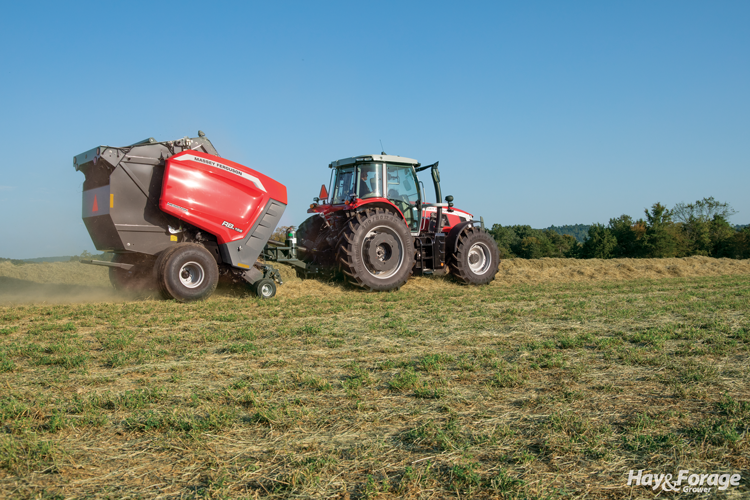
Now that warmer weather is upon us, everyone starts to get that itch to dust off the equipment and pull it out of winter storage. For some, the warm weather came unusually early this year, which had equipment out of storage before the end of March. It’s this time of year when we remember the issues we had last fall before our equipment was put away for winter. That’s when the internal discussion starts on whether to upgrade the machine or just fix it and run it for one more year.
We discussed in a previous column the current state of the equipment industry. One of the actions I suggested was to be patient with your new purchases and give your dealer time to hunt for the best deal for your situation if it’s not already on their yard. This process requires that you know exactly what you want and what you can live without when it comes to equipment options. Let’s discuss a few options on newer round balers that you need to consider when upgrading your current machine.
A smaller, denser package
Today’s round balers, though they may be similar looking to previous models, have made tremendous strides in achieving higher bale densities. One of the useful features is being able to adjust the density of the bales from the cab and the ability to vary the density in different sections of the bale.
Why would you want to vary the density?
Current balers can make a bale so dense that you can’t stick a fork in it; however, you can now make the core slightly less dense so it’s easier to spear. If the hay is a little damp, a less dense core can help reduce spoilage in the center. If a bale is going to mold from moisture, it always starts at the core of the bale. This is why I recommend to some customers that they entertain the idea of owning a fixed chamber baler, or soft-core baler, as some people refer to them as. If you sell your hay by the bale to horse owners, it’s a win for both parties. You have slightly less hay in each bale, and the buyer gets a better product that’s easier for their animals to consume!
When it comes to the size of the bale, most farmers want them as big as possible. I have suggested that with these new density systems you can purchase a smaller, less expensive baler and achieve almost the same bale weights you get with an older, larger unit. This is an effective way to save a little on a new purchase. I’ve had a lot of farmers in my area who have always owned 4x6 balers downsize to a 4x5 baler. In the South, the main determining factor is bale weight, and with some of these new generation balers, a farmer’s equipment is not capable of lifting the larger, denser bales on a routine basis.
Precutters add value
One aspect that adds weight to the bales are the knives, or the precutter as they are sometimes called. This is by far the most popular new feature buyers are adding to new balers. This is mainly due to the greater popularity of baleage, but the precutter also offers benefits for dry hay production. By sizing the crop before it gets into the chamber, it further improves bale density. It also helps with the digestibility of the forage and reduces feeding waste, although it does boost the horsepower required to pull the baler. Precut bales also work better if they are used in a mixed ration. Personally, after owning a chopping baler, you could not pay me to go back to a regular baler to put up feed for my cows. The drop floor under the rotor itself is worth the money the whole system costs.
Net savings
Some customers still debate the cost of net versus twine on a per bale basis. Yes, net is substantially more expensive, but the productivity improvement is almost priceless. Savings in tractor hour depression alone can make up the difference. Twine tying can take up to four to five times longer to secure a bale. I understand that in the North twine can be easier to remove after bales get iced in the winter. I have experienced this myself firsthand, but other than that, it’s really hard for me to justify twine with the capabilities of the new generation balers.
No matter which options work for your operation, there have been drastic improvements in the round-baler segment in the last decade. It’s worth considering this year if it’s time to upgrade. Just do your homework and allow your dealer time to find the perfect baler for your operation at the best price possible. •
This article appeared in the April/May 2024 issue of Hay & Forage Grower on page 14.
Not a subscriber? Click to get the print magazine.

